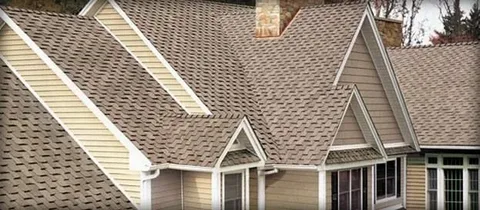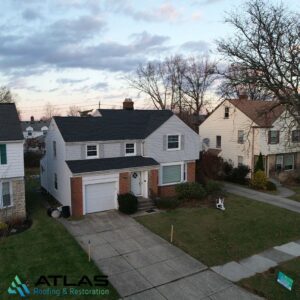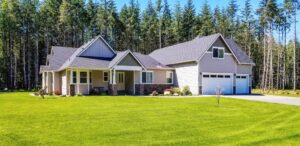Energy efficiency in commercial buildings has become a top priority for businesses and property owners. With increasing energy costs, environmental concerns, and stricter government regulations, many are seeking ways to reduce energy consumption and improve sustainability. One of the most overlooked but vital aspects of a building’s energy efficiency is its roof. Commercial roofing plays a critical role in maintaining temperature regulation, reducing energy consumption, and creating a more comfortable and eco-friendly space. In this blog, we will explore how commercial roofing impacts energy efficiency and how different roofing systems contribute to a building’s overall performance.
1. Understanding the Connection Between Roofing and Energy Efficiency
Energy efficiency in buildings is achieved by minimizing the amount of energy required for heating, cooling, lighting, and other operational needs. The roof is one of the largest surfaces exposed to the sun and weather, making it an essential component in regulating the temperature within the building.
A properly installed and well-maintained commercial roof can have a significant impact on a building’s energy usage by:
- Reducing Heat Gain in Summer: A reflective or cool roofing material can help minimize the heat absorbed from the sun, reducing the need for air conditioning.
- Improving Insulation: Roof insulation plays a pivotal role in preventing heat loss during the winter months and keeping the building warm. This results in lower heating costs.
- Minimizing Heat Loss: Good roofing materials and techniques ensure that a building’s HVAC system does not have to work as hard to maintain optimal indoor temperatures.
2. The Importance of Roofing in Thermal Insulation
Thermal insulation is one of the primary ways that roofing contributes to energy efficiency. By providing an additional layer of protection between the building’s interior and the outside elements, a well-insulated roof reduces the need for excessive heating or cooling systems.
There are two types of insulation commonly used in commercial roofs:
a) Thermal Insulation (Fiberglass, Foam, and More)
This insulation material is commonly applied to the underside of the roof deck to prevent heat from escaping during the winter or entering during the summer. Thermal insulation materials, such as fiberglass batt, spray foam, or rigid foam board, work by creating an air barrier that reduces heat flow through the roof. This is crucial in maintaining energy-efficient temperatures throughout the year, reducing heating and cooling demands.
b) Reflective Insulation (Radiant Barriers)
Reflective insulation works by reflecting heat away from the roof during summer, reducing the heat buildup inside the building. This is particularly important in warmer climates where air conditioning systems are essential to keeping indoor spaces comfortable. The reflective coatings or membranes that are applied to the roof surface can lower the amount of heat transferred into the building, providing significant energy savings.
3. Cool Roofing: A Sustainable Solution for Commercial Buildings
Cool roofing is an innovative roofing solution designed to reflect more sunlight and absorb less heat than traditional roofing materials. Cool roofs are particularly useful in hot climates, as they help reduce the heat island effect, lower cooling costs, and improve the overall comfort of the building’s interior.
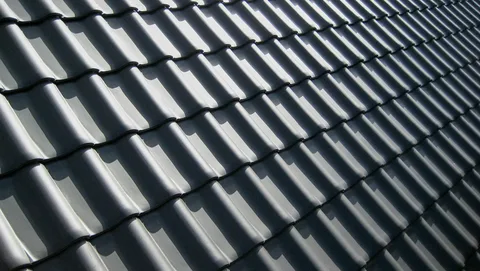
A cool roof typically involves using reflective materials that have high solar reflectance and thermal emittance. These materials can significantly reduce the temperature of the roof surface, preventing excessive heat gain inside the building. There are various options for cool roofing systems, including:
- White Membrane Roofing: Commonly used for flat roofs, this material reflects sunlight and has a low heat absorption rate.
- Metal Roofing: Galvanized metal roofs are excellent reflectors of sunlight and can help maintain a cooler indoor environment.
- Cool Shingles: Available in a variety of colors, these shingles are designed to reflect sunlight and minimize heat retention.
4. The Role of Roof Design and Material Selection
The design and material selection for commercial roofing are integral to energy efficiency. The choice of roofing material directly impacts the building’s insulation properties, its ability to reflect heat, and the overall performance of the roof in extreme weather conditions.
a) Single-Ply Roofing Systems
Single-ply roofing membranes, such as TPO (Thermoplastic Olefin) and EPDM (Ethylene Propylene Diene Monomer), are widely used for commercial buildings. These materials are lightweight, durable, and provide excellent insulation and heat-reflective properties. TPO roofs, in particular, are known for their high reflectivity and energy-efficient performance, making them a popular choice for environmentally-conscious businesses.
b) Green Roofs and Vegetative Roofing Systems
Green roofs, also known as living roofs, involve growing vegetation on the roof surface. They provide insulation benefits by acting as an additional layer of protection against temperature extremes. Green roofs absorb heat and rainwater, reducing the amount of runoff and improving the energy efficiency of the building. They also offer long-term environmental benefits by improving air quality, reducing noise pollution, and creating a habitat for wildlife.
c) Built-Up Roofing (BUR)
Built-up roofing systems consist of multiple layers of bitumen and reinforcing fabrics. These roofs are durable and weather-resistant, offering superior insulation and protection against heat loss. BUR systems can also be coated with reflective materials to improve energy efficiency. Although more common in older commercial buildings, BUR systems remain a reliable choice for energy-conscious business owners.
5. Roof Maintenance and Energy Efficiency
Routine roof maintenance is essential to ensure that a commercial roof continues to perform optimally and contribute to energy efficiency. Damaged or neglected roofs can result in significant energy losses. Leaks, cracks, or deteriorating materials can cause drafts, moisture buildup, and reduced insulation effectiveness, leading to higher energy costs.
Proper roof maintenance can involve:
- Regular Inspections: Checking for signs of wear and tear, such as loose shingles, cracks, or leaks.
- Cleaning Roof Surfaces: Removing debris such as leaves, branches, or dirt that can block the roof’s drainage system and cause overheating.
- Re-coating Roofs: Applying reflective coatings or sealants to maintain the roof’s ability to reflect sunlight and prevent heat absorption.
A well-maintained roof ensures that energy efficiency is preserved over time, preventing unnecessary strain on heating and cooling systems.
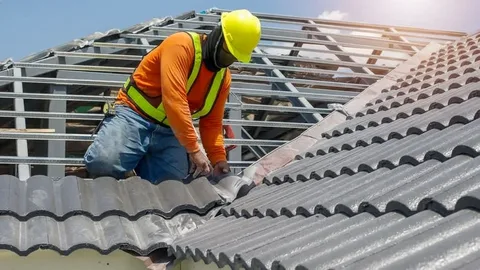
6. The Financial Benefits of Energy-Efficient Roofing
The installation of an energy-efficient commercial roofing system may come with a higher upfront cost, but the long-term savings on energy bills can significantly outweigh the initial investment. With reduced energy consumption, businesses can expect lower utility bills and a shorter return on investment (ROI) period.
In addition to the direct financial benefits, energy-efficient roofing can contribute to:
- Increased Property Value: Buildings with energy-efficient roofs tend to have higher resale values, as energy efficiency is a key consideration for modern buyers.
- Incentives and Rebates: Many local and federal governments offer rebates and incentives for installing energy-efficient roofing systems. This can help offset the initial costs of roofing installation.
- Improved Tenant Satisfaction: For property owners who lease out commercial spaces, tenants often prefer buildings with energy-efficient features that reduce their own utility costs.
7. Conclusion: Atlas Roofing & Restoration
As businesses continue to focus on sustainability and reducing operational costs, commercial roofing is an essential component of building energy efficiency. With options like reflective roofing systems, high-quality insulation, and green roofing solutions, business owners can reduce their energy consumption, lower heating and cooling costs, and contribute to a greener environment.
At Atlas Roofing & Restoration, we specialize in providing high-quality, energy-efficient roofing solutions for commercial properties. Whether you are looking to upgrade your existing roof or install a new energy-efficient system, our team of experts can help you choose the best solution to meet your needs. Reach out today to learn more about how we can improve your building’s energy performance and protect your investment.

